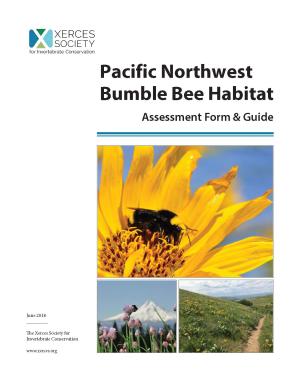
By Rich Hatfield, Ann Potter (WDFW), and Joel Sauder (IDFG)
Bumble bees are charismatic and easily recognizable pollinators thanks to their large size and distinctive striped patterns, usually of black and yellow, but often with stripes of red, orange, or white. They play an incredibly important role in keeping our environment healthy by pollinating flowers in natural areas and by contributing to successful harvests on farms.
In recent years, the importance of pollinators and their contribution to the agricultural economy has been recognized, as has their vulnerability, in large part because of widespread losses of bees. The causes of these declines are not fully understood, but the following are likely playing a significant role: loss or fragmentation of habitat, pesticide use, climate change, overgrazing, competition with honey bees, low genetic diversity, and perhaps most significant of all, the introduction and distribution of pathogens through commercial pollinators. Regardless of the ultimate cause of bumble bee declines, protecting existing habitat and creating and maintaining new habitat are some of the most immediate and productive steps that can be taken to conserve these important pollinators.
This Habitat Assessment Guide, a product of the Pacific Northwest Bumble Bee Atlas, is a tool for landowners and managers in the Pacific Northwest to score their existing habitat to highlight areas that could be enhanced, either through improved habitat management, or habitat augmentation. This tool can be used alongside our Habitat Management for Bumble Bees in the Pacific Northwest for a complete toolkit for designing and maintaining high quality bumble bee habitat in Oregon, Washington, and Idaho.
